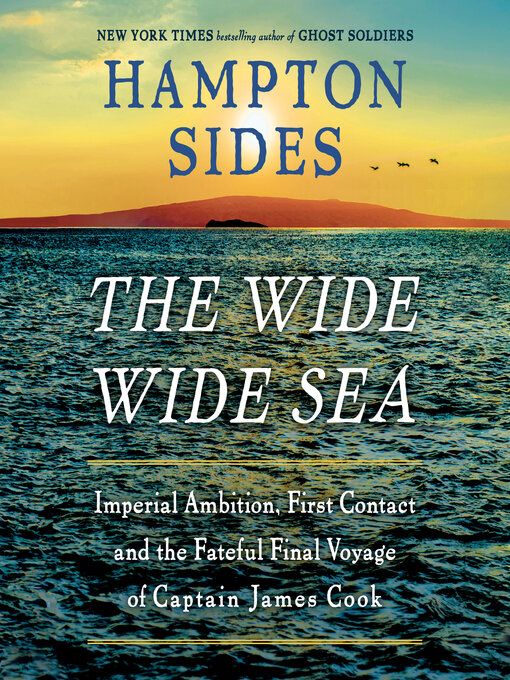
–from The Wide Wide Sea
Hampton Sides
Doubleday
Hampton Sides, bestselling author of Blood and Thunder and Ghost Soldiers, can make history read like a novel. He tells vivid, gripping stories, often relying on people’s journals and other first-hand accounts to bring an immediacy and intensity to events that happened decades or even centuries ago.
In his latest book, he recounts the third and final voyage of Captain James Cook. Perhaps the greatest explorer of the Age of Enlightenment, Cook was different from many European explorers, “his interest was more inquisitive than acquisitive, more empirical than imperial.” Where others sought glory and treasure, Cook was propelled to investigate and understand this planet as it was known and unknown in the late 1700s.
On his first voyage (1768-1771) he explored the east coast of Australia; on his second (1772-1775), he crossed the Antarctic Circle, seeking a rumored great southern continent. On his final voyage (1776-1779), Cook was tasked to find the Northwest Passage —a navigable waterway connecting the Atlantic to the Asian markets of the Pacific — from the “backside,” or west coast, of the North American continent, becoming the first person to cross both the Arctic and Antarctic circles.
Along with tales of high seas adventures, Sides also describes the indigenous peoples that Cook and his men encountered. Healthy, robust societies whose diets and lifestyles were superior to those of most Europeans of the time, Tahiti and Hawai’i were described as tropical paradises—if you overlooked the frequent wars between islands, the human sacrifices, and occasional cannibalism.
Featured prominently in the Englishmen’s journals are descriptions of the relaxed sexual customs of the Polynesians. The sailors were particularly impressed by the females’ amorous virtuosity. (Sides notes that, interestingly, “there are no stories passed down through Hawaiian oral history that speak of British sexual prowess.” In other words, sex with English sailors was probably similar to English cooking: nothing to write home about.) The Europeans were less rhapsodic about the fact that, in addition to their many wives and concubines, Hawaiian kings also had a number of aikane, or male lovers.
Private property was also a European concept that did not translate well into Polynesian culture. What the English saw as theft, the native peoples understood as sharing — You have so much, of course you’d want to share it! It was one of these cultural misunderstandings that would result in Cook’s death on the island of Hawai’i in February 1779.
The Wide Wide Sea is perfect for the armchair adventurer, offering tales of extraordinary courage, extraordinary fortitude, and, not least for the young seamen, extraordinary sex.
This review first appeared in The Columbia River Reader (July 15, 2024.) Reprinted with permission.



